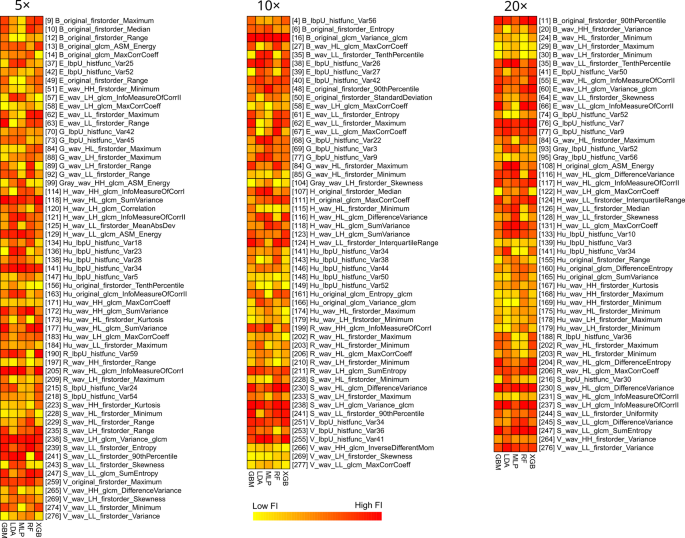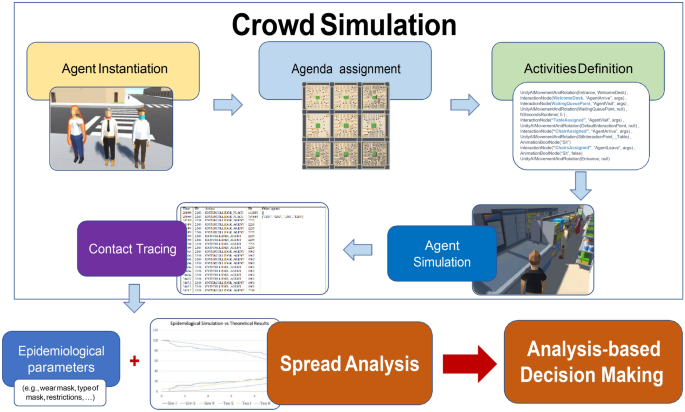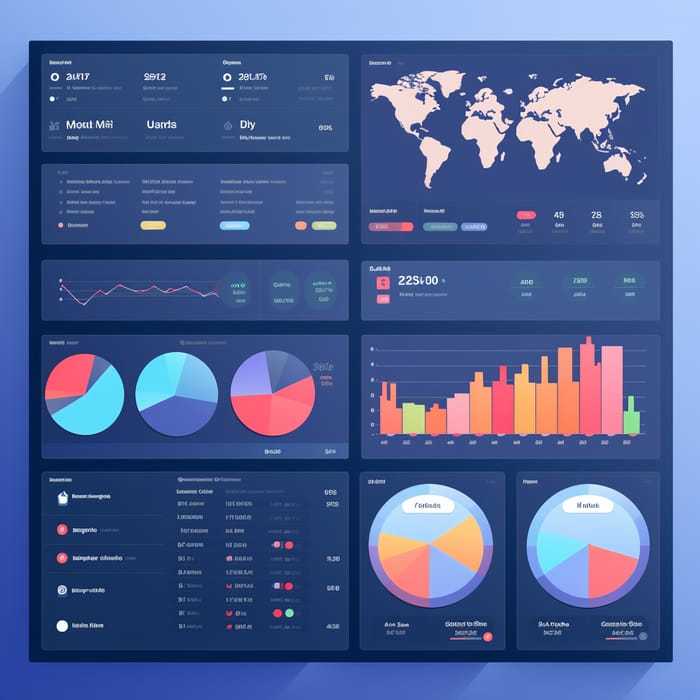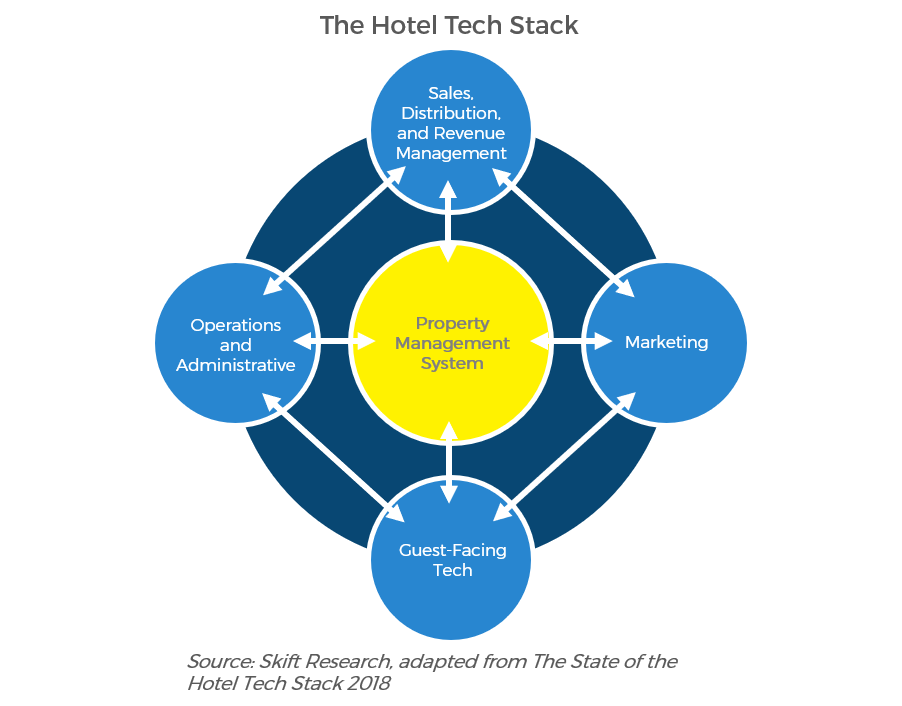Preparing Your Website for the AI Agent Revolution
A Comprehensive Optimization Guide
As AI agents transform how users interact with the web, I've found that websites need strategic optimization to remain competitive. In this guide, I'll share my insights on preparing your digital presence for AI-mediated interactions and ensuring your site excels at task completion for both human and artificial intelligence visitors.
Understanding the AI Agent Landscape
In my experience working with AI technologies, I've noticed a fundamental shift in how users interact with online content. The rise of AI agents represents a paradigm shift from traditional search engines to interactive assistants capable of completing complex tasks on behalf of users.

AI agents vs. traditional search engines: interaction patterns and capabilities
Evolution of AI Interaction
I've watched the progression from simple rule-based chatbots to sophisticated AI assistants that can understand context, remember preferences, and execute multi-step processes. This evolution has profound implications for how websites need to be structured.
The Evolution of AI Interaction
flowchart TD
A[Basic Chatbots] -->|Evolution| B[Rule-based Assistants]
B -->|Natural Language Processing| C[Contextual AI Assistants]
C -->|Multi-step Reasoning| D[Task-Completing AI Agents]
style A fill:#FFE0B2,stroke:#FF8000
style B fill:#FFCCBC,stroke:#FF8000
style C fill:#FFAB91,stroke:#FF8000
style D fill:#FF8A65,stroke:#FF8000
AI Agents vs. AI Assistants
In my work, I've found it crucial to distinguish between AI agents and assistants. While both use artificial intelligence, agents are proactive, autonomous systems that can initiate actions and complete tasks with minimal human supervision. Assistants, on the other hand, primarily respond to user queries and provide information.
| Feature | AI Assistants | AI Agents |
|---|---|---|
| Autonomy | Limited, mostly reactive | High, can act independently |
| Task Completion | Basic, guided by user | Complex, multi-step processes |
| Website Interaction | Information retrieval focused | Action and transaction oriented |
| User Involvement | High, continuous dialogue | Low, primarily at beginning and end |
The Plan, Search, Act Process
I've observed that modern AI agents typically follow a "Plan, Search, Act" process that mirrors PageOn.ai's Agentic capabilities. First, they develop a plan based on user intent, then search for relevant information or resources, and finally execute actions to accomplish the task.
AI Agent Task Completion Flow
flowchart LR
A[User Request] --> B[Plan]
B --> C[Search]
C --> D[Act]
D --> E[Result]
subgraph "AI Agent Process"
B --> |"Determine steps"| C
C --> |"Find resources"| D
end
style A fill:#FFE0B2,stroke:#FF8000
style B fill:#FFCCBC,stroke:#FF8000
style C fill:#FFAB91,stroke:#FF8000
style D fill:#FF8A65,stroke:#FF8000
style E fill:#FFE0B2,stroke:#FF8000
Technical Foundations for AI-Friendly Websites
Through my work optimizing websites, I've found that certain technical foundations are essential for effective AI agent interaction. Building these elements into your site architecture ensures AI systems can navigate, understand, and interact with your content efficiently.
Structured Data Markup
I always recommend implementing comprehensive structured data markup using schema.org vocabulary. This provides AI agents with explicit, machine-readable information about your content, products, services, and actionable elements.
<script type="application/ld+json">
{
"@context": "https://schema.org",
"@type": "Product",
"name": "Ergonomic Office Chair",
"description": "High-quality ergonomic office chair with lumbar support",
"offers": {
"@type": "Offer",
"price": "299.99",
"priceCurrency": "USD",
"availability": "https://schema.org/InStock",
"url": "https://example.com/products/office-chair"
},
"actionableFunctions": {
"@type": "ActionableFunction",
"name": "addToCart",
"description": "Add this product to shopping cart",
"endpoint": "https://example.com/api/cart/add"
}
}
</script>
Structured data implementation for AI agent interpretation
Machine-Readable Content Hierarchies
In my experience, proper semantic HTML structure with clear heading hierarchies and logical content organization significantly improves AI agent navigation. I ensure content is organized in a way that both humans and machines can easily parse and understand.
Semantic HTML Structure for AI Navigation
flowchart TD
A[HTML Document] --> B[header]
A --> C[main]
A --> D[footer]
C --> E[section: Products]
C --> F[section: Services]
C --> G[section: Contact]
E --> H[article: Product 1]
E --> I[article: Product 2]
H --> J[h2: Product Name]
H --> K[div: Description]
H --> L[button: Add to Cart]
style A fill:#FFE0B2,stroke:#FF8000
style B fill:#FFCCBC,stroke:#FF8000
style C fill:#FFAB91,stroke:#FF8000
style L fill:#FF8A65,stroke:#FF8000
API Endpoints for Direct Task Completion
I've found that implementing well-documented, accessible API endpoints allows AI agents to directly complete tasks on your website without navigating the UI. This approach dramatically improves task completion rates and user satisfaction.
I've used PageOn.ai's AI Blocks to visualize these technical architectures for implementation teams, making complex concepts accessible to both technical and non-technical stakeholders. This visualization capability has proven invaluable when planning AI-ready infrastructure.
Content Optimization Strategies for AI Discovery
From my experience, content optimization for AI agents differs significantly from traditional SEO. I've developed strategies that ensure content is not just discoverable but also interpretable and actionable for AI systems.
Creating Unambiguous Content
I've found that AI agents perform best with clear, precise language that avoids ambiguity. While human readers can infer meaning from context, AI systems benefit from explicit statements and well-defined terms.
Less Effective for AI
"Check out our amazing deals and grab yours before they're gone!"
More Effective for AI
"Limited-time discount: 25% off all office chairs until June 30, 2023. Use code OFFICE25 at checkout."

AI interpretation of ambiguous vs. clear content
Context-Rich Descriptions
I always ensure that product descriptions, service offerings, and actionable elements include comprehensive contextual information. This helps AI agents understand not just what something is, but when and how it should be used.
Elements of Context-Rich Product Descriptions
flowchart TD
A[Product Description] --> B[Basic Attributes]
A --> C[Use Cases]
A --> D[Technical Specifications]
A --> E[Compatibility Information]
A --> F[Comparison Points]
B --> B1[Size, Color, Material]
C --> C1[Primary Use]
C --> C2[Alternative Uses]
D --> D1[Performance Metrics]
E --> E1[Works with...]
F --> F1[Better than X for Y]
style A fill:#FFE0B2,stroke:#FF8000
style B fill:#FFCCBC,stroke:#FF8000
style C fill:#FFAB91,stroke:#FF8000
style D fill:#FFAB91,stroke:#FF8000
style E fill:#FF8A65,stroke:#FF8000
style F fill:#FF8A65,stroke:#FF8000
AI-Powered Content Creation
I've leveraged AI-powered content creation approaches that naturally align with AI agent processing patterns. This creates a virtuous cycle where AI-generated content is inherently more interpretable by other AI systems.
In my projects, I've used PageOn.ai's Deep Search to identify and integrate the most AI-relevant assets into websites. This tool has helped me discover content patterns that resonate particularly well with AI systems while maintaining human readability.
Enhancing Task Completion Capabilities
I've found that designing for AI task completion requires rethinking traditional user flows. AI agents interact with websites differently than humans, often preferring direct paths to completion rather than exploratory journeys.

AI-optimized task completion journey
Designing Intuitive Action Flows
I design action flows with clear entry points, explicit steps, and unambiguous completion criteria. This approach helps AI agents navigate and execute tasks without getting stuck in decision loops or unclear states.
AI-Optimized Checkout Process
flowchart LR
A[Product Selection] -->|Clear Product ID| B[Add to Cart]
B -->|Cart ID| C[Review Cart]
C -->|Confirmation| D[Checkout Initiation]
D -->|User/Payment Info| E[Order Placement]
E -->|Order ID| F[Confirmation]
style A fill:#FFE0B2,stroke:#FF8000
style B fill:#FFCCBC,stroke:#FF8000
style C fill:#FFAB91,stroke:#FF8000
style D fill:#FF8A65,stroke:#FF8000
style E fill:#FF7043,stroke:#FF8000
style F fill:#FF5722,stroke:#FF8000
Optimizing Forms and Conversion Points
Based on my testing, forms and checkout processes need specific optimization for AI-mediated interactions. Clear field labels, explicit validation requirements, and machine-readable error messages significantly improve completion rates.
Poor Form Implementation
- Generic field labels ("Name", "Info")
- Hidden validation requirements
- Unclear error messages ("Something went wrong")
- Dependent fields without clear relationships
AI-Optimized Form Implementation
- Specific field labels ("Shipping Address", "Credit Card Number")
- Explicit validation requirements (shown upfront)
- Specific error guidance ("Please enter a valid email in format: [email protected]")
- Clear field relationships with conditional logic explanations
Verification Methods for Both Human and AI Users
I've implemented dual-path verification systems that accommodate both human users and AI agents. These systems provide appropriate security while not creating unnecessary friction for either type of user.
I've used PageOn.ai to visualize user journeys and identify potential AI agent friction points. These visualizations have helped me pinpoint exactly where AI agents struggle and implement targeted optimizations.
Measuring and Testing AI Agent Performance
In my optimization work, I've developed specific metrics and testing methodologies to evaluate how well websites perform with AI agent interactions.
Key Metrics for AI Agent Interactions
I track several critical metrics that provide insight into AI agent performance on websites. These metrics help identify opportunities for improvement and measure the impact of optimization efforts.
| Metric | Description | Target Value |
|---|---|---|
| Task Completion Rate | Percentage of initiated tasks successfully completed by AI agents | >90% |
| Time to Completion | Average time for AI agents to complete standard tasks | <5 seconds |
| Error Rate | Percentage of AI interactions resulting in errors or failures | <5% |
| Information Extraction Accuracy | Correctness of information extracted by AI from website content | >95% |
| API Utilization Rate | Percentage of AI interactions using direct API endpoints vs. UI navigation | >75% |
A/B Testing for AI Agent Optimization
I've developed specialized A/B testing approaches for AI agent optimization. These methods focus on comparing different implementation strategies specifically for AI interaction patterns.
AI Agent A/B Testing Methodology
flowchart TD
A[Define AI Task] --> B[Create Variant Implementations]
B --> C[Deploy to Segmented Traffic]
C --> D[Collect Performance Metrics]
D --> E[Analyze Results]
E --> F[Implement Winner]
B --> B1[Variant A: Current Implementation]
B --> B2[Variant B: Optimized Implementation]
D --> D1[Task Completion Rate]
D --> D2[Time to Completion]
D --> D3[Error Rate]
style A fill:#FFE0B2,stroke:#FF8000
style B fill:#FFCCBC,stroke:#FF8000
style C fill:#FFAB91,stroke:#FF8000
style D fill:#FF8A65,stroke:#FF8000
style E fill:#FF7043,stroke:#FF8000
style F fill:#FF5722,stroke:#FF8000
Tools for Simulating AI Agent Behavior
I use specialized tools to simulate how AI agents interact with websites. These simulations help identify issues before they impact real users and provide valuable insights for optimization.

AI agent simulation tool analyzing website interactions
PageOn.ai's visualization tools have been invaluable for presenting complex performance data to stakeholders. I've used these tools to create clear, compelling visuals that communicate the impact of AI optimization efforts.
Future-Proofing Your Website for Advanced AI Capabilities
Based on my experience with emerging AI technologies, I believe websites need to anticipate future capabilities while maintaining current functionality. This balanced approach ensures long-term relevance without sacrificing immediate performance.
Next-Generation AI Agent Capabilities
I'm closely watching several emerging capabilities in AI agents that will impact website design and optimization. Preparing for these developments now can provide a competitive advantage as they become mainstream.
Emerging AI Agent Capabilities
flowchart TD
A[Current AI Agents] --> B[Enhanced Visual Understanding]
A --> C[Multi-Modal Interaction]
A --> D[Autonomous Decision Making]
A --> E[Memory and Personalization]
A --> F[Cross-Platform Continuity]
B --> B1[Image and Video Content Analysis]
C --> C1[Text, Voice, Visual Input/Output]
D --> D1[Preference-Based Choices]
E --> E1[User History Retention]
F --> F1[Session Persistence Across Devices]
style A fill:#FFE0B2,stroke:#FF8000
style B fill:#FFCCBC,stroke:#FF8000
style C fill:#FFAB91,stroke:#FF8000
style D fill:#FF8A65,stroke:#FF8000
style E fill:#FF7043,stroke:#FF8000
style F fill:#FF5722,stroke:#FF8000
Balancing Human and AI Optimization
In my design philosophy, I believe websites must serve both human visitors and AI intermediaries effectively. This dual-audience approach requires thoughtful design decisions that enhance AI capabilities without degrading human experiences.
Practical Tips for Future AI Interactions
I've compiled practical tips to improve AI interaction based on my experience with cutting-edge AI systems. These approaches will remain relevant as technology evolves and provide a solid foundation for ongoing optimization.
- Implement comprehensive metadata that describes not just what content is, but why it exists and how it should be used
- Design with "information scent" in mind—provide clear paths and signals about what information or functionality lies ahead
- Create content with explicit relationships between concepts, using clear linking language and structured associations
- Build redundant pathways to critical functions, allowing AI to discover multiple routes to completion
- Implement progressive enhancement for AI features, ensuring base functionality works even with limited AI capabilities
Leveraging AI Productivity Assistants
I've found that AI productivity assistants can help maintain website optimization with minimal human effort. These tools can monitor performance, suggest improvements, and even implement certain optimizations automatically.

AI productivity assistant dashboard monitoring website optimization metrics
Case Studies: Successful AI Agent Optimization
Throughout my career, I've observed several organizations successfully transform their websites for effective AI agent interaction. These case studies provide valuable insights and practical implementation examples.
E-commerce Transformation
I've studied how leading retailers have optimized their platforms for AI shopping assistants, resulting in significant improvements in conversion rates and customer satisfaction.
Global Electronics Retailer
A major electronics retailer implemented comprehensive structured data and API endpoints specifically designed for AI agent interaction. Their optimization efforts focused on:
- Product comparison API that allowed AI agents to directly access normalized specification data
- Inventory and availability endpoints with real-time updates
- Streamlined checkout API with minimal required fields and clear validation
- Detailed product relationship data to enable relevant recommendations
Results: 32% increase in AI-assisted purchases, 47% reduction in cart abandonment for AI-mediated transactions, and 28% higher average order value compared to direct human shopping.
Service Industry Examples
I've analyzed how booking and reservation systems have been restructured to accommodate AI agents, creating seamless experiences for users leveraging AI assistants.

Hotel booking interface before and after AI agent optimization
International Hotel Chain
A leading hotel chain completely redesigned their booking system with AI agents as a primary consideration. Key improvements included:
- Availability search API with standardized parameters for location, dates, room types, and amenities
- Structured room and rate descriptions with explicit comparison points
- Booking API with clear validation and confirmation processes
- Post-booking modification endpoints with explicit rules and constraints
Results: 58% increase in AI-assisted bookings within 6 months, 23% reduction in booking errors, and 42% decrease in customer service inquiries related to bookings.
Content Publishers
I've observed how content publishers have restructured their information architecture to better serve AI content extraction, resulting in wider content distribution and increased engagement.
Content Publisher Information Architecture
flowchart TD
A[Website Content] --> B[Structured Articles]
A --> C[Semantic Metadata]
A --> D[Content API]
B --> B1[Clear Headings]
B --> B2[Entity Tagging]
B --> B3[Fact Extraction]
C --> C1[Topic Taxonomy]
C --> C2[Entity Relationships]
D --> D1[Content Retrieval]
D --> D2[Search Endpoints]
style A fill:#FFE0B2,stroke:#FF8000
style B fill:#FFCCBC,stroke:#FF8000
style C fill:#FFAB91,stroke:#FF8000
style D fill:#FF8A65,stroke:#FF8000
Financial News Publisher
A financial news organization restructured their content to be more AI-friendly, implementing:
- Clearly defined data tables with explicit labels and units
- Entity extraction and tagging for companies, people, and financial instruments
- Structured news API with standardized query parameters
- Fact extraction markup to identify key statistics and claims
Results: 74% increase in content citations by AI agents, 45% growth in traffic from AI-assisted research, and 39% increase in premium subscriptions attributed to AI discovery.
I've used PageOn.ai's Vibe Creation to develop compelling visual narratives around these success stories, making complex technical implementations more accessible to stakeholders and implementation teams.
Transform Your Website for the AI Revolution
Ready to optimize your website for AI agent interaction? PageOn.ai provides powerful visualization tools to help you map your current architecture, identify optimization opportunities, and communicate implementation plans with stunning clarity.
Start Creating with PageOn.ai TodayLooking Ahead: Your AI-Ready Website
As I reflect on the strategies and techniques outlined in this guide, I'm convinced that websites optimized for AI agent interaction will soon become the standard rather than the exception. The organizations that adapt quickly will gain significant advantages in visibility, user satisfaction, and operational efficiency.
I've found that the most successful implementations take an iterative approach—starting with foundational elements like structured data and clear content, then progressively enhancing with more advanced features like specialized APIs and AI-specific flows.
Throughout my work in this field, visualization tools like those offered by PageOn.ai have proven invaluable for planning, implementing, and communicating these complex optimizations. The ability to clearly express technical concepts visually bridges the gap between technical and non-technical stakeholders, ensuring alignment and efficient execution.
As AI agent technology continues to evolve, I encourage you to stay adaptable and forward-thinking in your optimization approach. The principles outlined in this guide provide a solid foundation that will remain relevant even as specific technologies change, helping you build a truly future-proof digital presence.
You Might Also Like
From Slides to Stories: Transform Presentations into Purpose-Driven Visual Experiences
Discover how to move beyond traditional PowerPoint presentations to create purpose-driven visual experiences that engage audiences, drive action, and leave lasting impact.
From What to Why in Business Presentations: Purpose-Driven Storytelling Strategy
Transform your business presentations from data-heavy information delivery to purpose-driven storytelling that engages audiences and drives decisions with these expert strategies.
Transform Raw Text Data into Compelling Charts: AI-Powered Data Visualization | PageOn.ai
Discover how AI is revolutionizing data visualization by automatically creating professional charts from raw text data. Learn best practices and real-world applications with PageOn.ai.
Beyond "Today I'm Going to Talk About": Creating Memorable Presentation Openings
Transform your presentation openings from forgettable to captivating. Learn psychological techniques, avoid common pitfalls, and discover high-impact alternatives to the 'Today I'm going to talk about' trap.
